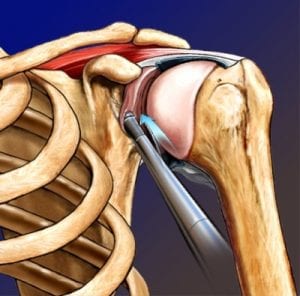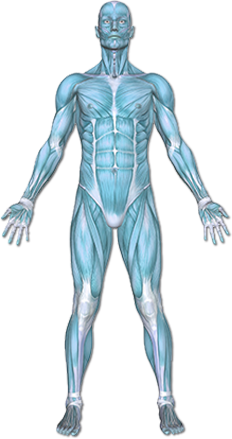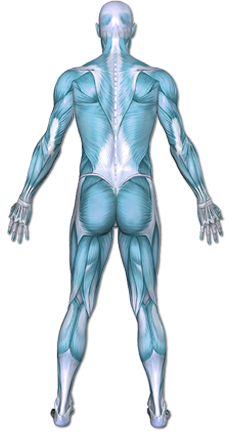Labral Tear
A shoulder labral tear is a tear of the labrum. The labrum is the tissue that holds the end of the arm bone, known as the humerus, in place.


Copyright © Nucleus Medical Media, Inc.
This content was created using EBSCO’s Health Library
Shoulder labral tears occur from an injury or through long-term wear and tear. Common causes include the following:
- Dislocated shoulder
- A violent overhead reach, such as when trying to stop a fall or slide
This content was created using EBSCO’s Health Library
Factors that may increase your chance of a labral tear include:
- Participation in certain sports, such as:
- Baseball pitching
- Golf
- Weightlifting
- Tennis
- Falling onto your shoulder
- Repetitive movements of the shoulder
- Lifting heavy objects
- Breaking a fall with your arms
- Direct blow to the shoulder
This content was created using EBSCO’s Health Library
Symptoms may include:
- Shoulder and/or arm pain
- Catching or loosening feeling of the shoulder
- Loss of shoulder range of motion
- Weakness to shoulder and/or arm
- Pain with shoulder movement
- Popping or grinding sensation
- Achiness of the shoulder
This content was created using EBSCO’s Health Library
Your doctor will ask about your symptoms and medical history. A physical exam will be done. Images may be taken of your shoulder. This can be done with:
- MRI scan with contrast
- CT scan with contrast
This content was created using EBSCO’s Health Library
Non-surgical
- Most labral tears will respond well to non-surgical treatment and may be just one component of a multi-factored pathology of the aging shoulder.
Physical therapy
- Physical therapy will often address a labral tear from the biomechanical approach of improving the motion and reducing the repetitive injury. If the inflammation and mechanical stress on the structures can be reduced then the tissue has a chance to heal.
Anti-inflammatory medication
- Anti-inflammatory medication may be prescribed by the physician in order to jumpstart the reduction in inflammation at the tissue. Once the tissue is no longer irritated it is more likely to respond to conservative treatment by allowing stretch and then fully recovering from the stretch.
Cortisone injections
- At times, the physician may inject cortisone at the specific site of injury, allowing a more targeted reduction in inflammation. Cortisone injections are given infrequently and may provide benefit for 6-8 weeks. During that time, a change in mechanics in motion of the arm is of top importance in order to avoid returning back to the same pattern of motion that caused the injury. A physical therapist will provide the specific education and training that you’ll need following your cortisone injection.
Surgical
- Surgical repair of a Type II SLAP lesions of the young overhead athlete is widely recommended in order to reduce the chance of a shoulder instability in older age. Middle-aged adults (25-45) will likely have other concurrent shoulder pathologies and will do well when all of the problems are surgically addressed. Older adults may require only minimally invasive surgery to the shoulder with removal of ragged or frayed tissue. They may not require a full repair due to having fewer forceful overhead activities than in their youth. These approaches tend to result in high patient satisfaction and return to activity. A shoulder with a Type I labral tear may not require surgery. In this case, you would likely have pain to the shoulder with pressure, in sleeping, and in overhead activity. The pain may change with the weather, suggesting inflammation of the tendons and bursae. At this time, the therapist may demonstrate home modality use to reduce pain and improve tolerance for activities of daily living. Positional change to avoid sleeping on the arm at night will improve blood flow to the area and reduce pain. The therapist will suggest multiple assisted motion patterns of the arm possibly including the use of pulleys for gentle stretch. The therapist will demonstrate safe motion mechanics of the arm and strengthen the supportive structures. You will likely find relief from the use of the home modalities and be able to participate in some light strengthening exercises to improve the surrounding muscles, slowly returning to your normal activities. Because the labrum will still have a lesion, it will be of upmost importance to make these therapy principles part of a long term program to improve functional use of the arm. If you have had surgery to your shoulder, the therapist will follow a specific protocol to apply just the right amount of strain on the shoulder to keep it safe after surgery. A sling may be recommended in the early stages but the therapist will get the arm moving with assistance within a relatively short period of time. You will be educated in how to provide varying levels of assistance to the arm for motion in safe planes in front of the body and eventually throughout the entire range of motion. Once the tissues are healed, the therapist will begin to put resistance on the support structures in order to improve the mechanics of motion and reduce the risk of another injury. The therapist will provide you with instructions and handouts on exercises that you can safely do at home. The goal is to improve the shoulder’s tolerance for exercise and promote appropriate scar formation at the surgical site. Be sure to do your home exercise program! This is the best way to keep the recovery on track.
This content was created using EBSCO’s Health Library
Follow these guidelines to prevent a shoulder labral tear:
- Use the proper technique when playing sports.
- Avoid putting yourself at risk for trauma to the shoulder area.
- Perform stretching and strengthening exercises that target the shoulder area.
This content was created using EBSCO’s Health Library
This content was created using EBSCO’s Health Library
RESOURCES:
- American Academy of Orthopaedic Surgeons
- Arthroscopy Association of North America
CANADIAN RESOURCES:
- Canadian Orthopaedic Association
- Canadian Orthopaedic Foundation
REFERENCES:
- Labral Tears. Internet Society of Orthopaedic Surgery & Trauma website. Available at:
http://www.orthogate.org/patient-education/shoulder/labral-tears.html
- Updated July 27, 2006.
- Accessed November 21, 2013.
- Shoulder Joint Tear (Glenoid Labrum Tear). American Academy of Orthopaedic Surgeons website. Available at:
http://orthoinfo.aaos.org/topic.cfm?topic=A00426
- Updated January 2001.
- Accessed November 21, 2013.
- What is a labrum/labral tear? Johns Hopkins Medicine website. Available at:
http://www.hopkinsortho.org/labrum_tear.html
- Accessed November 21, 2013.
- Ciccone, WJ II. (2013) Arthroscopic posterior labral repair and capsular shift with a lateralized posterior portal. Arthrosc Tech. Aug 30:2(4):e323-6.
- Hanchard, NC., Lenza, M., Handoll, HH., Takwoingi, Y. (2013). Physical tests for shoulder impingements and local lesions of bursa, tendon, or labrum that may accompany impingement. Cochrange Database Syst Rev. Apr 30:4.
- McCormick, F., Nwachukwu, B., Solomon, D., Dewing, C., Goliganin, P., Gross, DP. & Provencher, MT. (2014). The efficacy of biceps tenodesis in the treatment of failed superior labral anterior posterior repairs. Am J Sports Med. Feb 11.
- Mileski, RA. & Snyder, SJ. (1998). Superior labral lesions in the shoulder: Pathoanatomy and surgical management. J Am Acad Orthop Surg. Mar-Apr 6(2): 121-31.
- Munro, W. & Healy, R. (2009). The validity and accuracy of clinical tests used to detest labral pathology of the shoulder- A systematic review. Apr 14(2): 119-30.
- Provencher, MT. (2014). The efficacy of biceps tenodesis in the treatment of failed superior labral anterior posterior repairs: Review. Am J Sports Med, Feb 11.
- Xinning, L., Lin, TJ., Jager, M., Price, MD. Deangelis, NA., Busconi, BD. & Brown, MA. (2010). Management of type II superior labrum anterior posterior lesions: A review of literature. Orthop Rev. Mar 20; 2(1): 36.
This content was created using EBSCO’s Health Library


